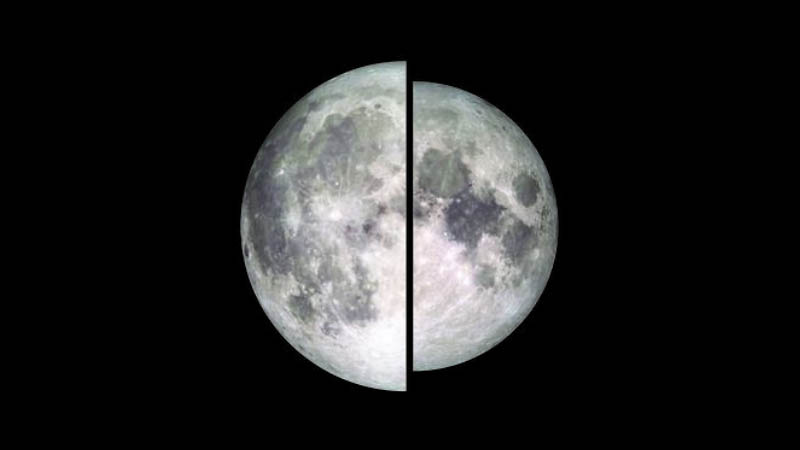An image of the moon taken by NASA’s Lunar Reconnaissance Orbiter is shown in two halves to illustrate the difference in the apparent size and brightness of the moon during a supermoon. The left half shows the apparent size of a supermoon (full moon at perigee), while the right half shows the apparent size and brightness of a micromoon (full moon at apogee). (NASA/Goddard/Lunar Reconnaissance Orbiter)
Home An image of the moon taken by NASA’s Lunar Reconnaissance Orbiter is shown in two halves to illustrate the difference in the apparent size and brightness of the moon during a supermoon. The left half shows the apparent size of a supermoon (full moon at perigee), while the right half shows the apparent size and brightness of a micromoon (full moon at apogee). (NASA/Goddard/Lunar Reconnaissance Orbiter) An image of the moon taken by NASA's Lunar Reconnaissance Orbiter is shown in two halves to illustrate the difference in the apparent size and brightness of the moon during a supermoon. The left half shows the apparent size of a supermoon (full moon at perigee), while the right half shows the apparent size and brightness of a micromoon (full moon at apogee). (NASA/Goddard/Lunar Reconnaissance Orbiter)
An image of the moon taken by NASA’s Lunar Reconnaissance Orbiter is shown in two halves to illustrate the difference in the apparent size and brightness of the moon during a supermoon. The left half shows the apparent size of a supermoon (full moon at perigee), while the right half shows the apparent size and brightness of a micromoon (full moon at apogee). (NASA/Goddard/Lunar Reconnaissance Orbiter)



